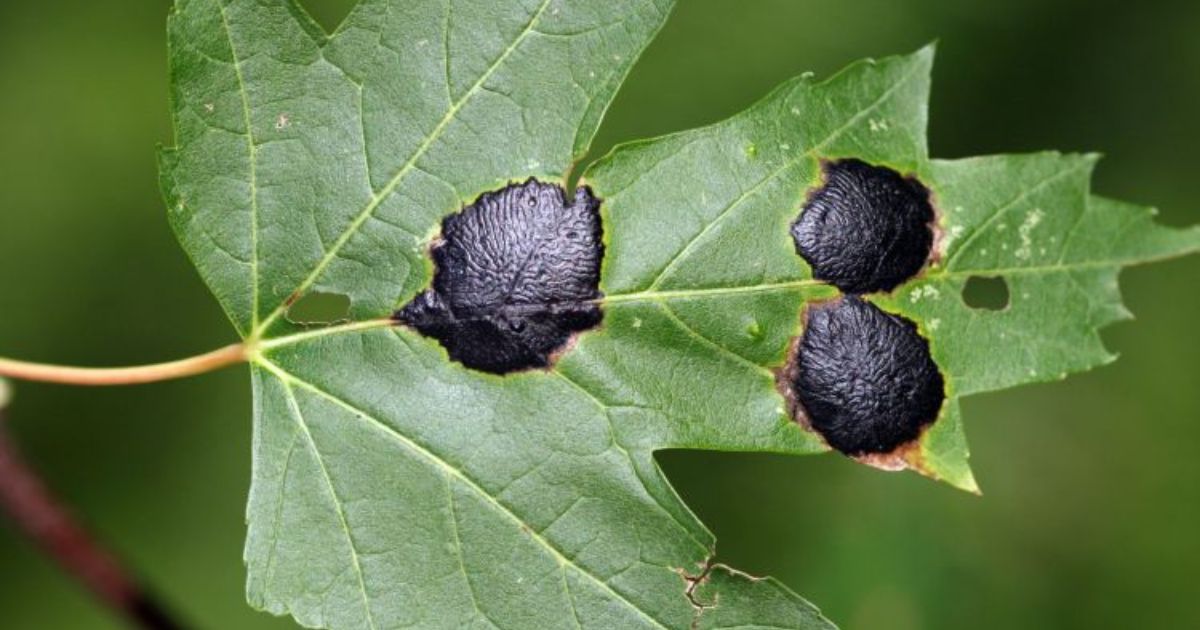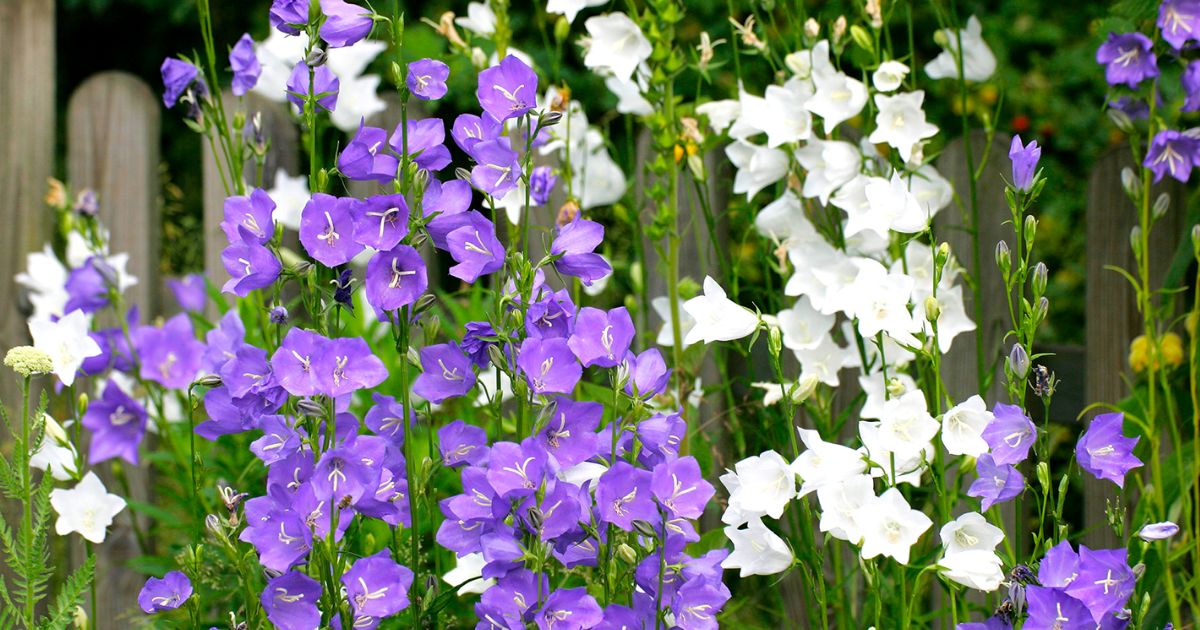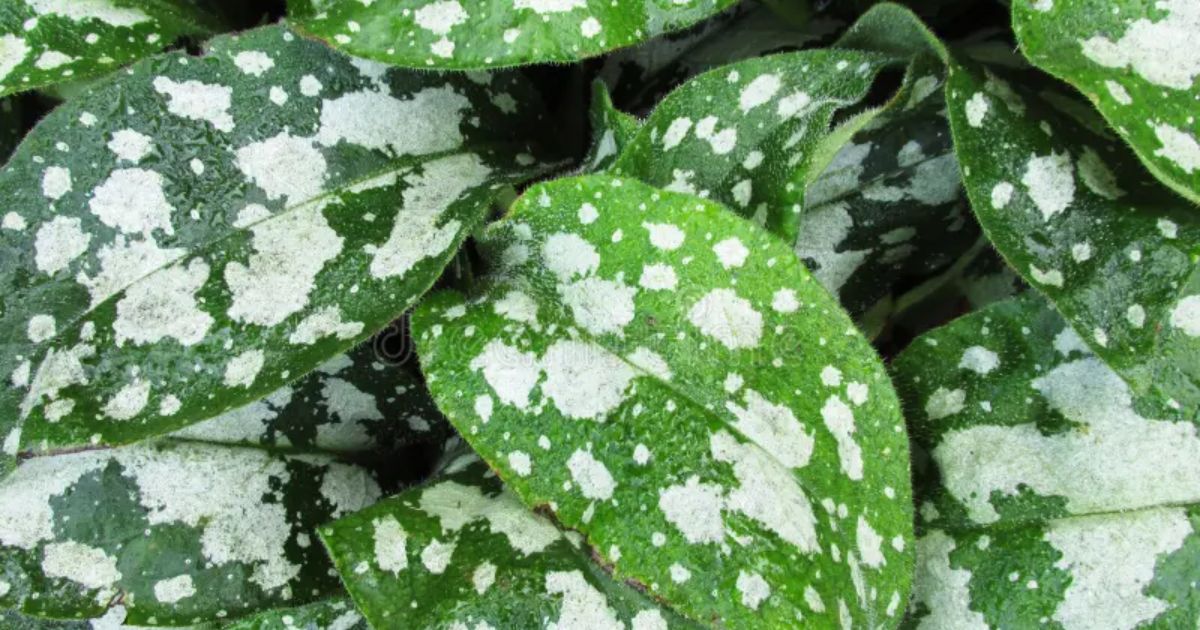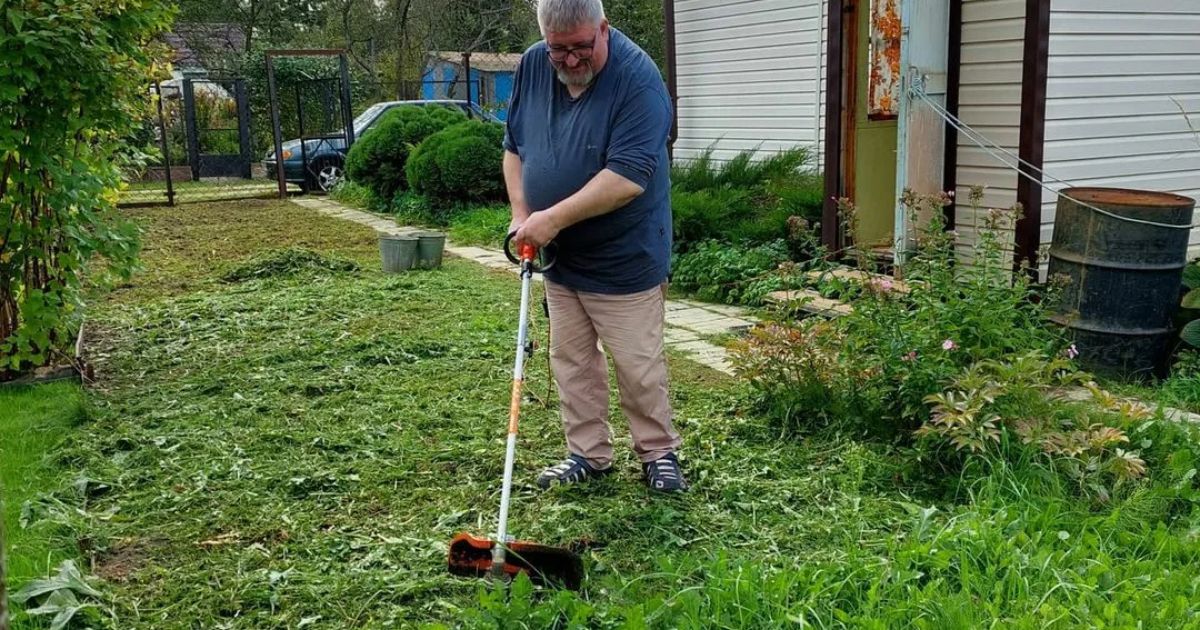Rhododendrons are cherished garden plants known for their lush green leaves and spectacular clusters of colourful blooms. Their beauty and resilience make them a favourite among both beginner and experienced gardeners. However, even the most well-cared-for rhododendrons can sometimes exhibit signs of trouble; one of the most common is the appearance of brown patches on their leaves.At first glance, these brown spots might seem harmless, but they often signal underlying issues that can affect the plant’s overall health and blooming potential. Brown patches can result from a variety of causes, including fungal infections, water stress, nutrient imbalances, or environmental conditions like excessive sunlight or frost.
Understanding the root Rhododendron leaf disease of these patches is essential for restoring your rhododendron’s vitality. In this guide, we’ll explore the causes of brown patches on rhododendron leaves, how to identify and treat them effectively, and the best preventive steps to keep your plants thriving throughout the year.
Understanding Brown Patches on Rhododendron Leaves
Brown patches on rhododendron leaves are a clear sign that your plant is under stress, but not all patches mean the same thing. These blemishes can vary in size, shape, and intensity of colour, depending on the underlying issue. In some cases, they start as small brown or yellow spots that gradually enlarge, while in others, entire sections of the leaf may turn brown and dry out.In mild cases, brown patches may only affect a few older leaves near the base of the plant, which is often part of the natural ageing process. However, when the problem spreads to younger leaves or new growth, it indicates a more serious concern, such as disease, poor watering habits, or environmental stress.
You might also notice differences in texture and pattern. Fungal infections often create circular brown spots with darker edges, while sunburn causes large, irregularly shaped patches on leaves exposed to direct sunlight. Root-related problems, such as poor drainage or overwatering, can cause the entire plant to exhibit general browning and wilting.Understanding the exact appearance and location of these patches helps you determine whether your rhododendron is suffering from a temporary issue or a more serious problem that requires intervention. What Causes White Spots on Tomato Leaves The secret to recovery is early detection and accurate diagnosis. Your plant’s vibrant green foliage ensures healthy future blooms.
Common Causes of Brown Patches on Rhododendron Leaves

Brown patches on rhododendron leaves can develop for several reasons, including environmental stress, pests, and diseases. Identifying the exact cause is crucial because each problem requires a different solution. Rhododendron leaf spot treatment Below are the most common culprits behind this issue:
Fungal Infections
One of the leading causes of brown patches is fungal disease.Rhododendron leaf fungus are particularly vulnerable to fungal infections like Phytophthora root rot, leaf spot, and rust.
- Leaf Spot Diseases: Typically caused by fungi such as Cercospora or Septoria, these diseases appear as small, round, brown spots that may expand and merge over time.
- Phytophthora Root Rot: A fungus that grows in the soil and targets the roots, causing the leaves to finally fall off, droop, and become brown.
- Rust and Blight: These cause reddish-brown pustules or blotches, often leading to leaf drop if left untreated.
- Excess moisture, poor air circulation, and dense planting often encourage these fungal issues.
Watering Issues
Improper watering is another frequent cause. Both overwatering and underwatering can lead to brown leaves:
- Overwatering saturates the soil, suffocating roots and causing them to rot. This leads to brown or black patches starting at the leaf edges.
- Underwatering results in dry, crispy brown spots due to dehydration.
- Rhododendron care tips prefer moist but well-drained soil; too much or too little water can quickly stress the plant.
Sunburn (Leaf Scorch)
Rhododendrons naturally thrive in partial shade. When exposed to strong, direct sunlight, particularly during midday, the leaves can scorch. Sunburn usually appears as large, irregular brown patches on the upper surface of leaves that face the sun. These patches often have a dry, papery texture.
Nutrient Deficiency
Brown patches can also result from an imbalance or deficiency of essential nutrients.
- Magnesium deficiency often causes brown edges and yellowing between veins.
- Nitrogen deficiency results in pale, weak leaves that often develop brown tips.
- Regular feeding with a rhododendron-specific fertilizer can help prevent these nutrient deficiencies.
Pest Damage
Certain pests, such as lace bugs, spider mites, and weevils, Why Is My Clematis Turning Brown can cause brown markings by sucking plant sap or chewing leaf tissue.
- Lace bugs create small, speckled brown spots on the upper side of leaves.
- Spider mites leave tiny stippled areas that may merge into larger brown patches.
- Vine weevils feed on leaf edges, causing irregular brown notches.
- Unchecked infestations not only discolour leaves but can also weaken the entire plant.
Cold or Frost Injury
Cold weather can damage rhododendron foliage, especially when new growth is exposed to late spring frost. Frost injury typically causes brown, water-soaked patches that later turn dry and brittle. Windburn during winter can also lead to similar browning, particularly on plants without protection.
Recognizing the specific cause behind the brown patches enables you to apply the correct treatment and prevent the problem from worsening. Next, we’ll explore how to diagnose the exact cause and ensure your rhododendron recovers quickly.
How to Diagnose the Exact Cause of Brown Patches on Rhododendron Leaves
Proper diagnosis is the key to saving your rhododendron and preventing the problem from coming back. Since brown patches can result from multiple causes, including diseases, Prevent brown leaves rhododendron pests, or environmental stress, a careful inspection of your plant and growing conditions will help you identify the exact issue. Here’s how to do it step by step:
Observe the Pattern and Location of the Patches
Start by closely examining where and how the brown patches appear:
- Circular spots with darker borders often indicate fungal infections such as leaf spot.
- Large, irregular brown areas on leaves exposed to sunlight suggest sunburn or leaf scorch.
- Brown patches near leaf edges or tips may be caused by watering issues or nutrient deficiencies.
- Uniform browning of older leaves may signal natural ageing, while browning of new growth points indicates a more serious problem.
Note whether the spots are spreading or limited to specific areas. Guide to Identifying Brown Spots on Mint Leaves This detail can help determine whether the issue is contagious (like a fungus) or environmentally related.
Check the Underside of Leaves and Stems
Flip the leaves over and look for tiny pests or discolouration. Lace bugs and spider mites often hide on the undersides, leaving behind small brown or yellow stipples and fine webbing.
If you notice tiny dots moving or residue on your fingers after touching the leaves, pests are likely the cause.
Also, inspect stems for any dark or mushy areas, which could indicate root or stem rot.
Assess the Soil and Root Health
Rhododendrons are sensitive to poorly drained or compacted soil.
- Gently dig near the base of the plant and check soil moisture. If it feels soggy, overwatering or poor drainage may be the culprit.
- If roots appear black, soft, or foul-smelling, it’s likely Phytophthora root rot.
- Conversely, dry, crumbly soil indicates underwatering or drought stress.
Testing soil pH is also essential, as rhododendrons prefer slightly acidic soil (pH 4.5–6.0). Alkaline conditions can lead to nutrient lockout and browning leaves.
Evaluate Environmental Factors
Think about recent weather or changes in your garden:
- Have there been extreme heatwaves, frost, or strong winds?
- Have you recently fertilized or pruned the plant?
- Is the rhododendron in direct afternoon sun or exposed to cold drafts?
- Environmental stress often leaves visible patterns. For example, frost damage is visible on the outer leaves, while sunburn appears on the topmost ones.
Monitor the Spread Over Time
Keep an eye on how quickly the brown patches spread.
- Fast-spreading spots typically indicate fungal infections How to Fix Cherry Tree Leaves Turning Brown or infestations by pests.
- Slow, isolated browning may result from nutrient imbalance or old age.
- Taking photos weekly can help you track your progress and assess whether your interventions are working.

Seek Expert Help if Unsure
If you’re still uncertain after observing all these signs, take a leaf sample to your local garden centre, nursery, or agricultural extension office. They can perform a closer examination or lab test to identify the exact cause.
By carefully examining these clues, including leaf patterns, pests, soil conditions, and environmental factors, you can accurately diagnose what’s troubling your rhododendron. Once you’ve identified the cause, you’ll be ready to apply the right treatment plan to restore your plant’s health and prevent future damage.
Effective Treatments for Brown Patches on Rhododendron Leaves
Once you’ve identified the cause of brown patches on your rhododendron leaves, the next step is to apply the proper treatment. Each underlying problem, whether it’s a fungal infection, poor watering habits, or pest damage, requires a different approach. Below are the most effective treatments to restore your rhododendron’s health and keep it thriving.
Treating Fungal and Bacterial Infections
Fungal illnesses, including blight, leaf spot, and Phytophthora root rot, are among the most common causes of brown patches on plants. Here’s how to manage them:
- Prune Affected Areas: Remove and destroy infected leaves and stems immediately. Always sterilize your pruning tools before and after use to prevent the spread of fungus.
- Improve Air Circulation: Trim surrounding plants and avoid overcrowding. Good airflow helps reduce humidity and prevent fungal growth.
- Apply Fungicides: Use a broad-spectrum fungicide labelled safe for rhododendrons. Copper-based or sulfur fungicides can be effective against leaf spots and blight.
- Avoid Overhead Watering: Water at the base of the plant early in the day so leaves can dry quickly.
- For Root Rot: If the roots are infected, replant in well-drained soil or raised beds to reduce moisture buildup.
Correcting Watering Problems
Water stress, both overwatering and underwatering, can lead to brown patches. Rhododendrons prefer evenly moist but not soggy soil.
- Overwatering: Reduce watering frequency and check that the soil drains properly. To enhance drainage, consider incorporating organic materials such as perlite or compost.
- Underwatering: Water deeply when the top 2 inches of soil feel dry to the touch. Mulch around the base with pine bark or leaf mould to retain moisture.
- Consistent Schedule: Avoid letting the soil dry out completely between waterings . How to Fix Your Grass A consistent routine helps stabilize plant health.
Managing Sunburn and Heat Stress
When rhododendrons receive too much direct sunlight, leaves can scorch and develop large, dry brown patches.
- Provide Shade: Move potted rhododendrons to a partially shaded spot or install a shade cloth to protect them from harsh midday sun.
- Hydrate Properly: Ensure the plant has sufficient water during hot spells. Dry roots increase vulnerability to sunburn.
- Mulching: Cover the base with a layer of mulch that is two to three inches thick. To keep roots cool and conserve moisture 4. Fixing Nutrient Deficiencies
Nutrient imbalances can lead to browning along leaf edges or between veins.
- Fertilise Correctly: Use an acid-loving plant fertilizer formulated explicitly for rhododendrons, azaleas, or camellias.
- Magnesium or Iron Deficiency: Add Epsom salt (magnesium sulfate) or chelated iron as recommended.
- Avoid Overfertilization: Excessive fertilizer can burn roots and exacerbate the issue. Always follow label directions carefully.
- Soil Testing: Conduct a soil test annually to maintain the proper pH (4.5–6.0) and nutrient balance.
Controlling Pests Effectively
Insects like lace bugs, spider mites, and weevils can damage leaves and cause brown spotting.
- Inspect Regularly: Check both sides of leaves for pests or their eggs.
- Use Natural Remedies: Spray with neem oil or insecticidal soap once a week until the infestation clears.
- Encourage Beneficial Insects: Ladybugs and lacewings naturally feed on harmful pests.
- For severe infestations, use a systemic insecticide approved for ornamental shrubs, but only as a last resort.
Protecting from Frost and Cold Damage
Cold winds and frost can burn rhododendron leaves, leaving brown, crispy patches.
- Provide Shelter: Wrap the plant with burlap or frost cloth during freezing temperatures to protect it from the cold.
- Mulch Generously: Mulching helps insulate the roots against extreme cold.
- Avoid Late Pruning: Pruning late in the season stimulates new growth that is more vulnerable to frost.
General Plant Care Practices
A strong, healthy rhododendron is less likely to develop brown patches.
- Regular Pruning: Remove dead or diseased parts each season.
- Clean Surroundings: Clear away fallen leaves and debris to prevent fungal spores from overwintering.
- Proper Spacing: Ensure sufficient distance between plants to allow for adequate light and airflow.
With the proper care and timely treatment, your Rhododendron leaf brown spots can recover from brown patches and produce lush green foliage once again. In the next section, we’ll look at the preventive steps you can take to keep your plant healthy year-round and avoid future issues.
Preventive Care for Healthy Rhododendrons
Preventing brown patches on rhododendron leaves is always better and easier than trying to cure them after they appear. A few smart care habits can go a long way in keeping your rhododendrons strong, disease-free, and full of vibrant blooms. Here are the best preventive measures to ensure long-term plant health and beauty.
Ensure Proper Planting and Soil Conditions
Rhododendrons thrive in slightly acidic, well-drained soil with a pH between 4.5 and 6.0.
- Check Soil pH: Test your soil annually and amend it with sulfur or peat moss if it becomes too alkaline.
- Good Drainage: Avoid planting in clay-heavy or compacted soil. Elevated beds or using organic materials, such as pine bark, can improve aeration and prevent root rot.
- Proper Depth: Plant rhododendrons slightly above ground level, never too deep to prevent water from collecting around the roots 2. Water Wisely
Consistent moisture is crucial for rhododendrons, but too much water can be just as harmful as too little.
- Water the soil thoroughly and evenly, keeping it moist but not overly wet.
- To prevent fungal growth, water near the base rather than overhead. Growth on leaves.
- Mulch Regularly: Apply 2–3 inches of organic mulch (like pine bark or needles) to retain moisture, regulate soil temperature, and prevent weed competition.
Provide Partial Shade and Protection from Harsh Elements
Rhododendron leaf discoloration prefer filtered sunlight or dappled shade.
- Leaf scorch can result from excessive exposure to direct sunlight. While insufficient light can reduce blooming.
- Plant them near trees or north-facing walls where they get morning sun and afternoon shade.
- Protect plants from strong winds and frost by using barriers or frost cloths during cold weather.
Regular Pruning and Cleaning
Routine pruning keeps your rhododendron healthy and improves airflow.
- Prune Dead or Infected Branches: Remove them immediately to prevent the spread of disease.
- Thin Dense Growth: This allows sunlight and air to reach the inner leaves, reducing humidity and the risk of fungal growth.
- Clean Up Debris: Always clear fallen leaves and old mulch from around the base of the plant. Decaying material can harbour pests and pathogens.
Maintain Proper Nutrition
Feed your rhododendron regularly to ensure strong growth and resistance against disease.
- Use Acidic Fertilisers: choose those formulated explicitly for azaleas or rhododendrons.
- Fertilise in Spring: Apply a balanced fertilizer (such as 10-8-6) immediately after flowering.
- Avoid Overfertilizing: Excess nutrients can burn roots and weaken the plant.
Monitor for Early Signs of Stress
Inspect your rhododendron frequently for discolouration, pests, or drooping leaves.
- Early detection helps you act before the problem worsens.
- Keep a close eye during seasonal transitions; spring and fall are critical times for fungal and pest activity.
Encourage Natural Resistance

Healthy plants have better natural defences.
- Maintain good spacing between plants to reduce competition and improve airflow.
- Avoid unnecessary stress, such as frequent transplanting or pruning during extreme weather.
- Rotate mulch and topsoil annually to prevent the buildup of pathogens.
By following these preventive care steps, your rhododendron will not only stay free from brown patches but will also grow more resilient and produce lush, glossy foliage and abundant blooms year after year. Healthy soil, balanced watering, and regular monitoring are the foundations of a truly thriving rhododendron garden.
Conclusion
Brown patches on rhododendron leaves may seem worrying, but with timely care and proper understanding, your plant can recover beautifully. These patches are often signs of underlying issues such as fungal infections, improper watering, pest infestations, or environmental stress. By carefully diagnosing the cause and applying targeted treatments, such as adjusting watering routines, improving soil drainage, or applying fungicides, you can restore your rhododendron’s natural vitality.
The key to long-term success lies in prevention. Providing the right soil conditions, maintaining consistent moisture, offering partial shade, and regularly inspecting your plants will help prevent most leaf problems before they start. Healthy, well-cared-for rhododendrons are naturally more resistant to disease and environmental stress.With the right balance of attention and care, your rhododendrons will reward you with lush, glossy leaves and stunning blooms year after year, a testament to the beauty and resilience of your garden.
FAQ
Are brown patches on rhododendron leaves always caused by fungus?
Not always. While fungal infections, such as leaf spot or blight, are common causes, brown patches can also result from overwatering, sunburn, nutrient deficiencies, pests, or frost damage. It’s essential to observe the pattern and texture of the patches to identify the exact cause.
Can brown patches spread to other plants?
Yes, if the cause is fungal or bacterial, the infection can spread to nearby plants through splashing water, wind, or contaminated tools. Always remove and dispose of infected leaves, and disinfect your pruning tools after use.
How often should I water my rhododendron to prevent brown patches?
Rhododendrons prefer consistently moist, yet well-drained, soil. Water deeply once or twice a week, depending on the weather and soil type. Avoid overwatering, as soggy roots can lead to rot and leaf browning.
What’s the best fungicide for treating rhododendron leaf spots?
A copper-based or sulfur-based fungicide is often effective against most rhododendron fungal diseases. Always follow the manufacturer’s instructions and apply during dry, calm weather to prevent leaf burn.
How can I prevent brown patches from coming back?
Maintain good air circulation, avoid overhead watering, use mulch to regulate moisture, and fertilize with an acid-loving plant formula. Regularly check for pests and remove any dead or diseased leaves promptly. Healthy growing conditions are the best defence against future leaf problems.





